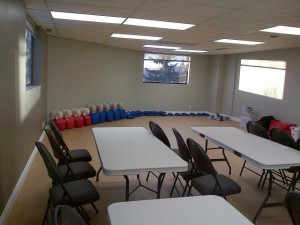Cardiopulmonary resuscitation training

CPR or cardiopulmonary resuscitation is one of the most basic life saving skills that a person must have. Before awareness in the general public was raised for the importance of learning lifesaving skills, only healthcare providers were signing up for our training programs in CPR. However, as the WHO’s most recent releases show that the top two leading causes of mortality in the world is ischemic heart disease and stroke, the public has become aware of the dangers of inadequately managing a cardiovascular emergency.
Minutes can mean a world of difference when the heart stops beating. In heart disease, the arteries that supply the heart with blood slowly become filled with plaque and become damaged. This leads to cardiac muscle death overtime and can lead to cardiac arrest. A sudden block of plaque – a stroke – can similarly lead to cardiac arrest. If the heart does not send oxygenated blood to the rest of the body, it can cause multi-organ failure and brain death.
Giving CPR
We teach trainees about the importance of giving CPR timely and adequately. Once the trainee has recognized that cardiac arrest has occurred, he or she has to start CPR immediately. This is step one and two under the Basic Life Support guidelines called the “Chain of Survival”. The chain is an important concept to remember under BLS training. The interventions given under the chain’s links one through five all aim to restore the circulation of blood in the body and to keep the person stabilized before and after medical support has been given to him or her.
According to the American Heart Association…
- Chest compressions should be IMMEDIATELY started by the first rescuer while the other prepares to give rescue breaths, either mouth-to-mouth or through a bag valve mask. This is important when giving CPR to both adults and children. Ventilation is even more important to pediatric patients because of the large percent of asphyxial arrests occurring in children due to inadequate ventilation given during CPR.
- The effectiveness of CPR is dependent on the quality of chest compressions given to the victim. The rate of compressions must be at least 100 in a minute, with rescue breaths given after every 30 c0mpressions. The chest is depressed by 1.5 inches in infants and 2 inches in older children and adults.
- In an in-hospital set up, other rescuers should prepare AEDs – automated external defibrillators – while chest compressions and rescue breaths are being given. Defibrillation is done when the heart stars beating, but is doing so irregularly. The electric shock given can help return the heart to normal sinus rhythm or normal heart rhythm.
Becoming certified as a rescuer
Our CPR programs all certify students once they complete the program and pass the post-test. The certificates are valid for two years before they expire. If you plan in renewing your certificate, you can sign up for a re-certification class, available for three out of our five training courses. We do not renew expired certification!
